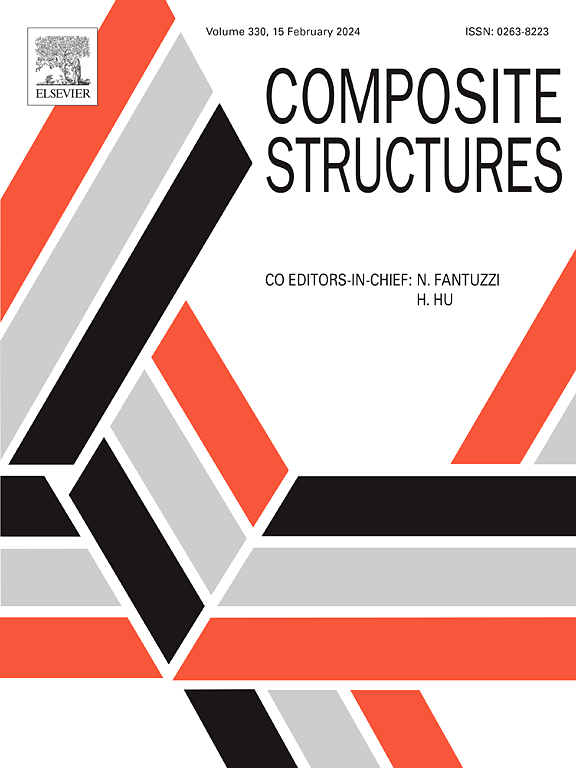Thermo-mechanical stability analysis of FG composite beam-type structures with open thin-walled cross-sections considering temperature distributions
IF 6.3
2区 材料科学
Q1 MATERIALS SCIENCE, COMPOSITES
引用次数: 0
Abstract
This research investigates the stability behaviour of functionally graded (FG) thin-walled beam-type structures under thermo-mechanical loads. For this purpose, a geometrically nonlinear beam finite element formulation is introduced capable of modelling stability problems arising from varying temperature conditions. Uniform, linear, and nonlinear temperature distributions through the wall thickness are considered, respectively, and a linear distribution along the beam is also allowed. Temperature-dependent material properties are allowed using the power-law function. The equilibrium equations of the beam element are derived using the updated Lagrangian incremental formulation and the principle of virtual works. The small strain and large rotation conditions are assumed to be valid. Stress resultants are calculated by the Euler-Bernoulli-Navier and Vlasov theories for bending and torsion, respectively. On the basis of the aforementioned FG beam formulation, a computer program is developed. The program has capabilities to deal with both approaches, i.e. the eigenvalue and load-deformation ones, respectively. In the latter case, a small perturbation load need to be introduced along with the nominal load. By imposing different boundary conditions, power-law index values and FG distributions, the buckling temperature value as well as the nonlinear response of a beam-type structure under consideration can be determined. The obtained results are compared with those available from existing literature or obtained by the shell finite element model.
考虑温度分布的开口薄壁截面FG复合梁型结构热力学稳定性分析
本文研究了功能梯度薄壁梁型结构在热机械载荷作用下的稳定性行为。为此,引入了一种几何非线性梁有限元公式,能够模拟由不同温度条件引起的稳定性问题。温度沿壁厚的均匀分布、线性分布和非线性分布分别被考虑,沿梁的线性分布也被允许。使用幂律函数允许与温度相关的材料特性。利用改进的拉格朗日增量公式和虚功原理推导了梁单元的平衡方程。假设小应变和大旋转条件是有效的。应力结果分别用欧拉-伯努利-纳维尔和弗拉索夫理论计算弯曲和扭转。在上述FG梁公式的基础上,编制了计算机程序。该程序具有处理两种方法的能力,即特征值和载荷-变形分别。在后一种情况下,一个小的摄动负载需要与标称负载一起引入。通过施加不同的边界条件、幂律指数值和FG分布,可以确定所考虑的梁型结构的屈曲温度值和非线性响应。所得结果与已有文献和壳有限元模型的计算结果进行了比较。
本文章由计算机程序翻译,如有差异,请以英文原文为准。
求助全文
约1分钟内获得全文
求助全文
来源期刊

Composite Structures
工程技术-材料科学:复合
CiteScore
12.00
自引率
12.70%
发文量
1246
审稿时长
78 days
期刊介绍:
The past few decades have seen outstanding advances in the use of composite materials in structural applications. There can be little doubt that, within engineering circles, composites have revolutionised traditional design concepts and made possible an unparalleled range of new and exciting possibilities as viable materials for construction. Composite Structures, an International Journal, disseminates knowledge between users, manufacturers, designers and researchers involved in structures or structural components manufactured using composite materials.
The journal publishes papers which contribute to knowledge in the use of composite materials in engineering structures. Papers deal with design, research and development studies, experimental investigations, theoretical analysis and fabrication techniques relevant to the application of composites in load-bearing components for assemblies, ranging from individual components such as plates and shells to complete composite structures.
 求助内容:
求助内容: 应助结果提醒方式:
应助结果提醒方式:


